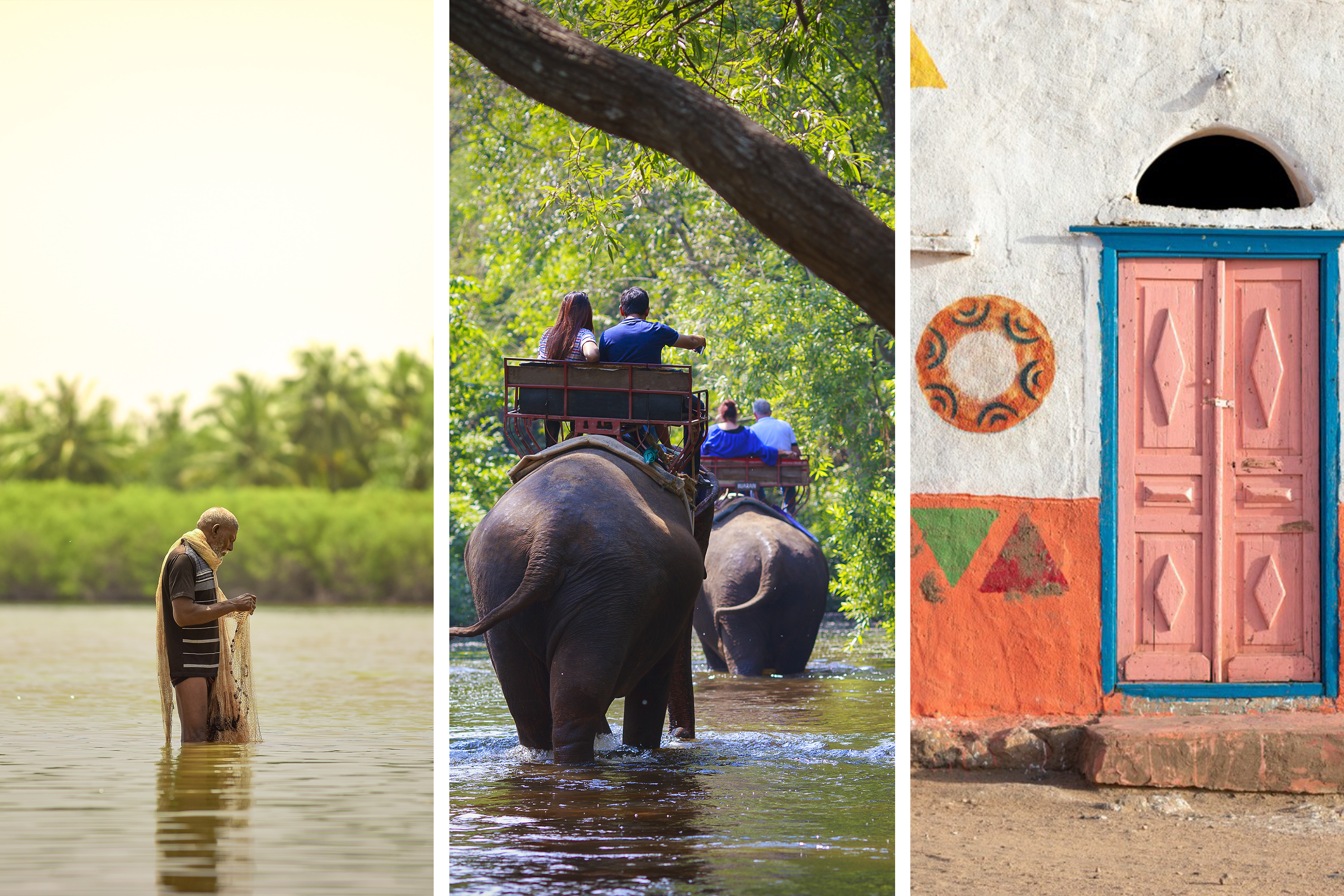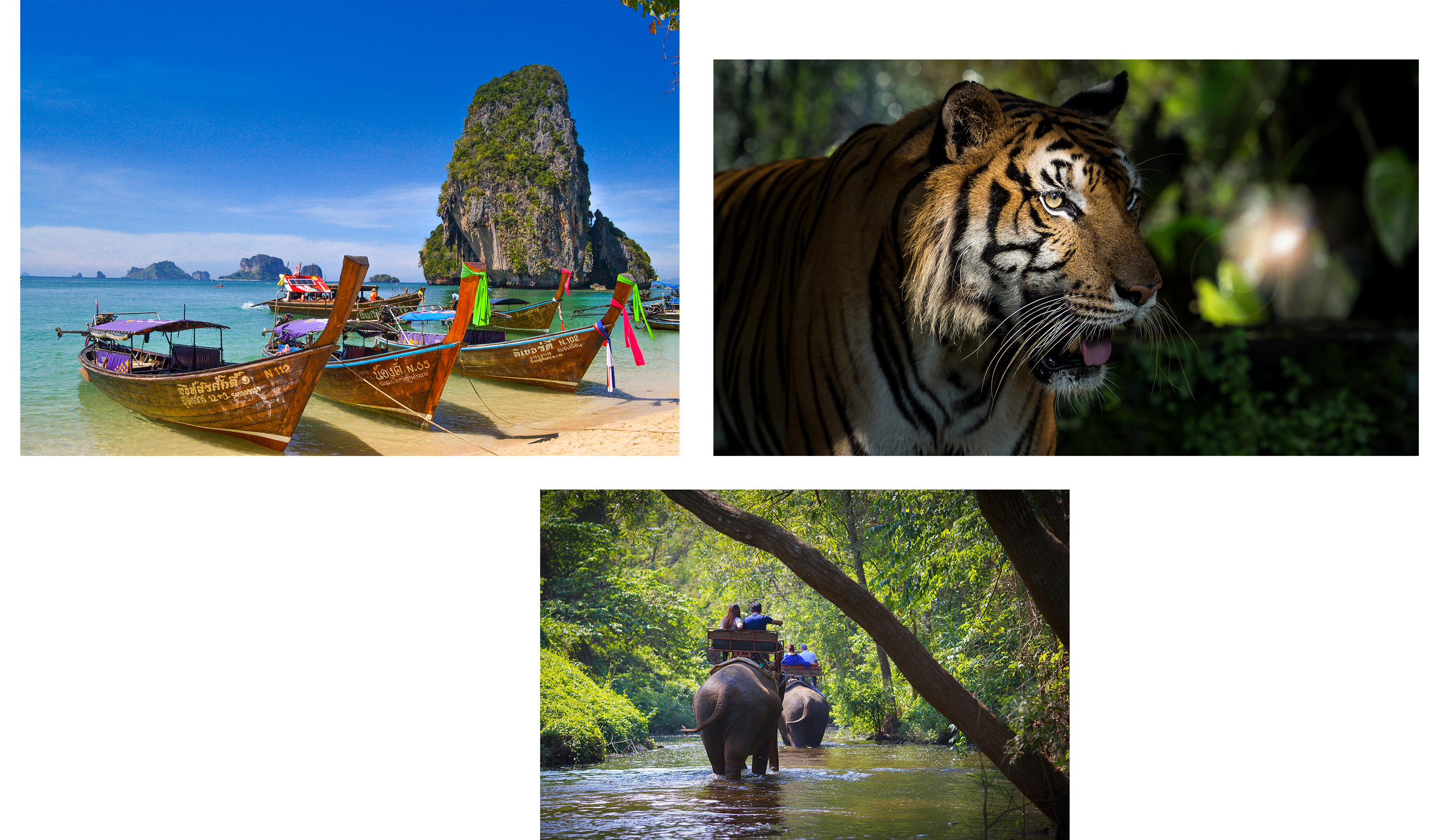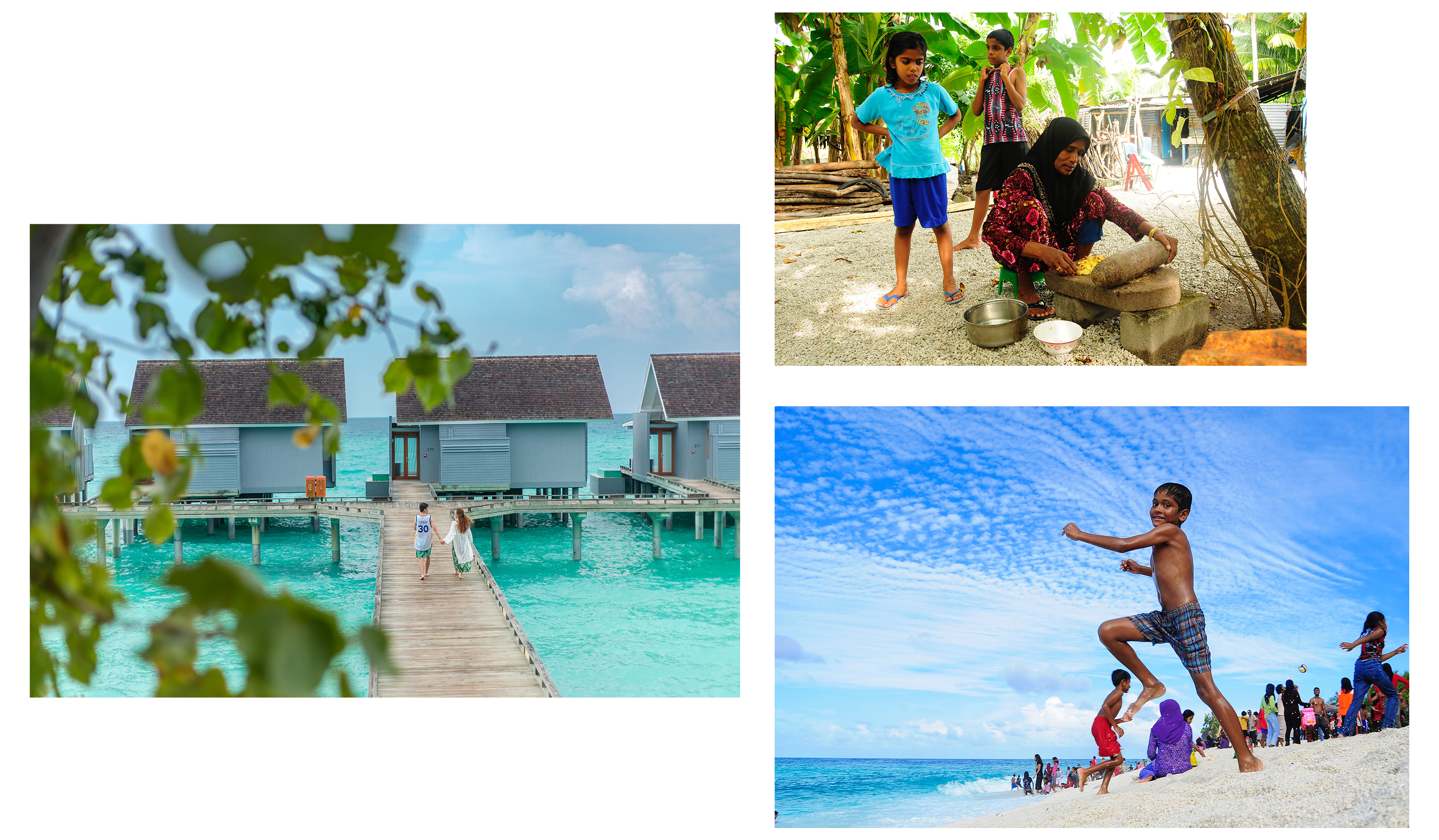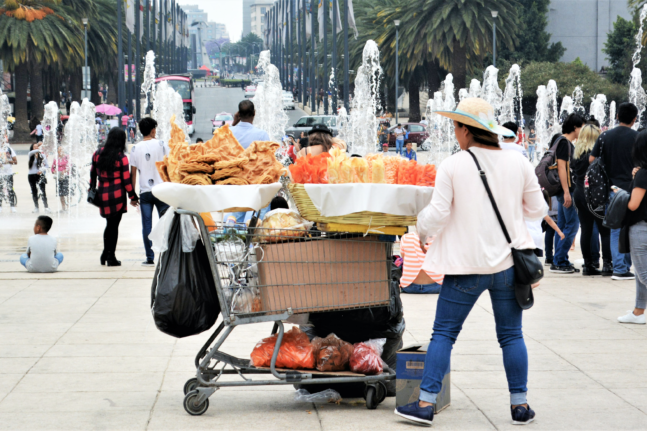Egypt, Thailand and the Maldives: progress towards a more sustainable tourism

Three countries share three different stories and reflect on their efforts to transform tourism into a more sustainable and inclusive model.
For Egypt, Thailand and the Maldives, the Covid-19 pandemic served as a major eye-opener to their respective governments that their tourism models were not sustainable.
The pandemic, which seriously threatened the economic stability and prosperity of all three tourism-reliant countries, in fact therefore presented an opportunity of sorts – by acting as an accelerator of change.
These three stories provide a closer look at how three different UNDP teams have been addressing the unique challenges each country faces, and how they’ve been supporting the respective governments on a path towards a tourism that benefits all.
Egypt: “We have the capabilities to transform the current state of tourism into a fully sustainable and community-based model.”

When is it a good idea to apply a portfolio-based approach?

In its simplest form, a portfolio-based approach seeks to develop, test, learn and scale (where appropriate) a suite of complementary interventions that can shift complex systems by focusing on multiple intervention points at a given time.
Think about applying this approach when the challenges you face are:
- Dynamic and inherently unpredictable.
- The root cause of the issue lacks social consensus.
- There is no way to accurately define the problem, meaning solutions often remain elusive.
Egypt is well known for its continuous growth in tourism over the past decades. In 2019, it was ranked the second most visited country in Northern Africa and the 19th most visited in the world. However, in 2020 – as with the rest of the world – the Covid-19 pandemic caused a dramatic fall in the number of incoming tourists and consequently a significant drop in tourism contribution to the country’s GDP.
“The anecdotal evidence suggests that the impact of the pandemic on the country’s tourism is much stronger than the official numbers state. Also, with the onset of the Ukrainian-Russian war – and given that both Russian and Ukrainian tourists belong to the largest groups of people who visit our country – the impact is even higher,” explains Alessandro Fracassetti, UNDP Resident Representative in Egypt.
Amid the global challenges that still hinder the country’s tourism from fully recovering, important questions about Egypt’s future approach towards tourism started to emerge: “How can Egypt engage the local communities and build its tourism practices around sustainability, while minimising the influence that mass tourism has had on the country and its citizens? Does the current approach of the tourism sector take full account of its current and future impacts on the economy, society and the environment?”
Naming the issues
The biggest challenges hindering the transformation of tourism in Egypt have been deep rooted in the country’s tourism sector for decades. Prior to the Covid-19 outbreak, tourism was predominantly built around mass leisure travel – large numbers of tourists visiting the same few places at the same time. However, mass tourism has had detrimental effects on the country because “it has benefited the local communities only very marginally, while the very few people at the top have profited the most.”
The prevalence of mass tourism also minimised the diversity of touristic offerings. “Tourism in Egypt has been mostly limited to just a few ‘magnets’ people typically come for, such as the pyramids, temples, beaches or Sharm El Sheikh. But our country has a huge number of nature-based attractions in its offering,” explains Alessandro. “Egypt’s nature does not consist of just the beaches, but also of protected areas and mangroves, or beautiful parks and religious objects of high spiritual value.”
Recognising the potential
“Our country has the capabilities to transform the current state of tourism into a fully sustainable and community-based model. Territory-wise we possess all the means to fulfil such potential – from beautiful and diverse sustainable areas, deserts and seas, to the river Nile, ancient civilisations and monuments. And speaking of the environment, Egypt has been ranked the top performer within the Middle East and North Africa region with regards to environmental sustainability, as well as being the top performer in the natural and cultural resources.”
Involving the government
The country’s government has been actively joining the conversation on reimagining tourism, thinking of ways to transform it into a more innovative and diverse sector. “Tourism has been identified as one of those promising accelerators that span through different development challenges and programmes we here at UNDP Egypt actively support and engage in. It has also become an opportunity for us to provide expertise and best practices to the specific governments that require it in order to support the transformation.”
“UNDP Egypt has partnered with the government on critical initiatives such as the mainstreaming of biodiversity or developing the four main guidelines to strengthen green development in the tourism sector.” It is increasingly believed that the future of tourism in Egypt now lies in the integrated, diversified and sustainable tourist experience which drives economic contribution and directly benefits the local communities.
“We are now at the beginning of the process, but to fully rethink the tourism sector we consider climate resilience, sustainable benefits for the whole system, and a shared vision at the national level – committing not just those involved in tourism, but all potential stakeholders, which is crucial to building sustainable and innovative tourism models.”
Thailand: “Having a strong network of partnerships has helped us to start discussions at the national level.”

Thailand Policy Lab
Thailand Policy Lab (TPL) was born out of the joint collaboration between the UNDP and NESDC in September 2020. Funded by the NESDC, which represents the Royal Thai Government, the collaboration is driven by NESDC applying different systems methodologies proposed by the UNDP, which are designed to explore critical and complex areas of work and identify potential portfolios of strategic policy intervention for the government, and in the process, build new policy innovation capabilities.
In 2019, a record 40 million tourists came to Thailand – a milestone reached after years of steadily increasing numbers. Bangkok, the country's capital, became the most visited city in the world in 2019, alone welcoming almost 23 million visitors.
Parima Suwannakarn, a Policy Exploration Analyst for the Thailand Policy Lab – a project built in collaboration with the UNDP, explains: “The country does not specialise in just one type of tourism that attracts most of its foreign visitors, but rather has a diverse portfolio of offerings, ranging from the megacity hub of Bangkok to the most remote places with beautiful landscapes.”
UNDP Thailand has been actively trying to push sustainable tourism towards the country’s mainstream model since well before the Covid-19 outbreak. “Back in around 2017, we wanted to create a model for sustainable tourism in local communities, and build space around wildlife-based tourism, tiger conservation or around the protection of endangered cranes. We had started pilots in four different communities.”
Then in 2020, everything changed. The number of incoming travellers shrank to 6.7 million, causing the Thai economy to plummet. Unemployment within the tourism sector reached an all-time high and had a grave impact not only on the 7 million people who were formally employed in it, but also on the industry’s much larger and highly vulnerable informal sector.
“During this time, and now more than ever, we at the UNDP set out to support our government partners in navigating this uncertainty and building resilience in the industry.” As a result, three main projects which deeply rethink and reframe the country’s tourism have come into motion.
1. Sustainable Tourism Portfolio Design
“Together with the National Economic and Social Development Council (NESDC) – our partner and the country’s sustainable development policy think tank – we were asked to design a recovery plan for three provinces in Southern Thailand which are considered the key beach destinations: Phuket, Phang-Nga and Krabi.”
The project was an entry point for introducing the UNDP’s portfolio methodology to the NESDC and demonstrating how designing the portfolio-based approach for sustainable tourism helps to better address the uncertainties while also supporting policymaking.
Key learnings from undertaking this systematic approach is that even though the informal sector has been an essential part of the tourism industry, the country has failed to acknowledge it in the general discourse. “Based on this fact, we designed interventions aiming to ‘leave no one behind’ and with that started to build capacities for the informal sector.”

2. Phuket Socio-Economic Recovery Project
The goal of the project for both the UNDP and NESDC has been to assess the impacts Covid-19 has had on the Phuket province, and to re-align tourism and the development plan for its socio-economic recovery, together with the local government.
“We were very lucky to have found partners and allies at a local university who connected us with the local government and the private sector. All of them were very strong drivers of this work.”
Diversification has been the key insight of this project: “The Phuket province cannot rely on mass tourism, but rather needs to diversify in a way that benefits the community. Thinking alongside the private sector in the province, we defined the MICE tourism and the wellness sectors as the most suitable options.”
MICE tourism and wellness hubs

The acronym “MICE” stands for Meetings, Incentives, Conventions and Exhibitions. This type of tourism plays an important part in Thailand’s tourism scene as the country has become a popular location for international events of various kinds, so MICE has a great potential to become a key sector in Thailand’s tourism industry.
Thailand is also considered to be the regional wellness hub and a leading destination for medical tourism in Asia. The country’s offerings include health and therapeutic services ranging from dental, healthcare and aesthetic, to traditional Thai medicine or Muay-Thai boxing gyms.
3. Community-based tourism
The project has kicked off with a network of strong partnerships focused on bringing sustainable tourism to a larger number of local communities. “Together with the Thailand Accelerator Lab, which brings together grassroots innovations; Designated Areas for Sustainable Tourism Administration (DASTA), which is the authority of community-based tourism; and a social enterprise partner who has strong footprints in the local communities, we were able to redesign what the future of community-based tourism (CBT) would look like in the long term.”
The result should reflect a tourism model actively designed and managed by the communities, which they will also directly benefit from. In this way, the idea of tourism that simply takes place in and around a community is replaced by tourism that actively engages and benefits these communities.
Parima Suwannakarn sums up what all three of these projects have in common: “Covid-19 made us realise that certain models of tourism are not sustainable. To rethink tourism means to adjust the development model of different places for their own unique needs. For example, Phuket used to be a synonym for mass tourism in Thailand, but now the conversation has shifted towards asking how to make this specific tourism model more sustainable and quality-focused while at the same time benefiting the communities.”
The Maldives: “When you are scattered around 185 islands, coming together to share perspectives and learn is vital.”

The unique demography of the Maldives is what sets it apart most from other countries – its population of roughly 540,000 people is spread across 185 islands, while another 128 islands are resort-only islands, used to provide a high-end tourist experience.
Because the country’s tourism is scattered through different islands and not concentrated around one specific “magnet” or monument, the majority of the islands adopt a very similar tourism model based on luxurious hotels, villas, spas and restaurants.
In 2019, 1.7 million tourists visited the country, which is more than three times the actual population of the Maldives. “We are a nation highly dependent on foreign tourism which makes us very vulnerable to external and macro-economic shocks. And while we have been talking about the issue of diversification of the economy for probably 15-20 years, it was mostly the pandemic that really opened up questions about the future of the country’s tourism model,” explains Enrico Gaveglia, Resident Representative at UNDP Maldives.
Another challenge the Maldives has been facing is the lack of a market for domestic tourism. “Almost the entirety of the Maldives’ tourism comes from outside the country’s own population, as there is no tradition within the population to participate in the Maldives’ tourist experiences. This was particularly challenging when the country was looking for the right approach to reopen its tourism-reliant economy during the pandemic, while the borders had to remain closed.”
The reimagination of tourism
The nationwide efforts are set on developing more diversified tourism offerings that go beyond high-end tourism experiences, and which usually require very similar services and treatment, no matter the travel destination – be it a resort in the Maldives or a resort in Sharm El Sheikh.
“Together with the country’s government, we set out to create island-specific tourism that is both diverse and sustainable. Our collaboration is currently focused on sustainable local island tourism development through local stakeholders’ training and on crafting sustainable thresholds for tourism development of the local communities. In this way, the communities can define and capitalise on island-specific brand narratives and learn to market their unique natural and cultural assets.”

Guesthouse tourism
After the Maldives relaxed its tourism rules in 2009, which had previously restricted all tourism to resorts, a new type of tourism model emerged: guesthouse tourism. Islanders have been granted the power to build guesthouses on their islands and provide accommodation to the tourists, which has enabled the creation of a cheaper alternative more suitable for the mid- and lower-market segments. Guesthouse tourism has a great potential to benefit the life of the islanders, but only if it operates on the principles of sustainable and community-based tourism.
Opportunities for knowledge sharing
The UNDP Maldives currently participates in building capacities and establishing a formal system to integrate the development of sustainable tourism offerings in a way that involves everybody.
“In essence, at the UNDP, our role is to design programmes that assist all the organisations and institutions within the tourism sector in creating a common space for shared learning.’’
To truly involve everybody in the process of redefining tourism, the country needs the resorts and other private businesses, organisations, local councils and communities, as well as the government authorities, to start working together instead of staying isolated in projects within their own areas of expertise. By sharing the experiences and challenges they face with other groups, they will develop a shared vision of how the sustainable transformation of tourism should look, and be able to adopt the sustainable practices and propagate them through the islands.
“In the end, it creates a common understanding of the solutions each group is proposing and helps the country to move into the testing and piloting phases faster. One example is creating the much-needed guesthouse standards or homestay training packages for the islanders who take part in the emerging guesthouse tourism, so they can better understand the opportunities and challenges this type of business can bring them.”
Illustrations: Ivana Cobejová
Photos: cover photo UNDP's blog source, Shutterstock, Unsplash, Pexels



